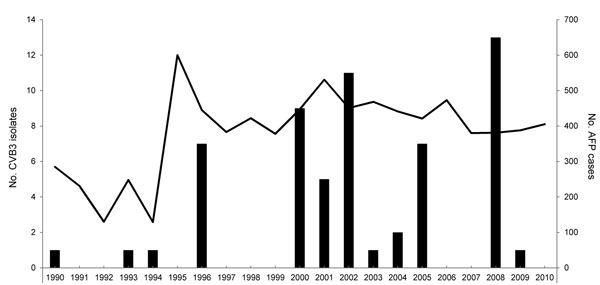Volume 18, Number 11—November 2012
Dispatch
Coxsackievirus B3, Shandong Province, China, 1990–2010
Figure 1

Figure 1. . . Frequency of isolation of coxsackievirus B3 (CVB3) in patients with acute flaccid paralysis, Shandong Province, People’s Republic of China, 1990–2010. Bars indicate number of CVB3 isolates from acute flaccid paralysis (AFP) surveillance; line indicates number of cases of AFP.
1These authors contributed equally to this article.
Page created: October 15, 2012
Page updated: October 15, 2012
Page reviewed: October 15, 2012
The conclusions, findings, and opinions expressed by authors contributing to this journal do not necessarily reflect the official position of the U.S. Department of Health and Human Services, the Public Health Service, the Centers for Disease Control and Prevention, or the authors' affiliated institutions. Use of trade names is for identification only and does not imply endorsement by any of the groups named above.